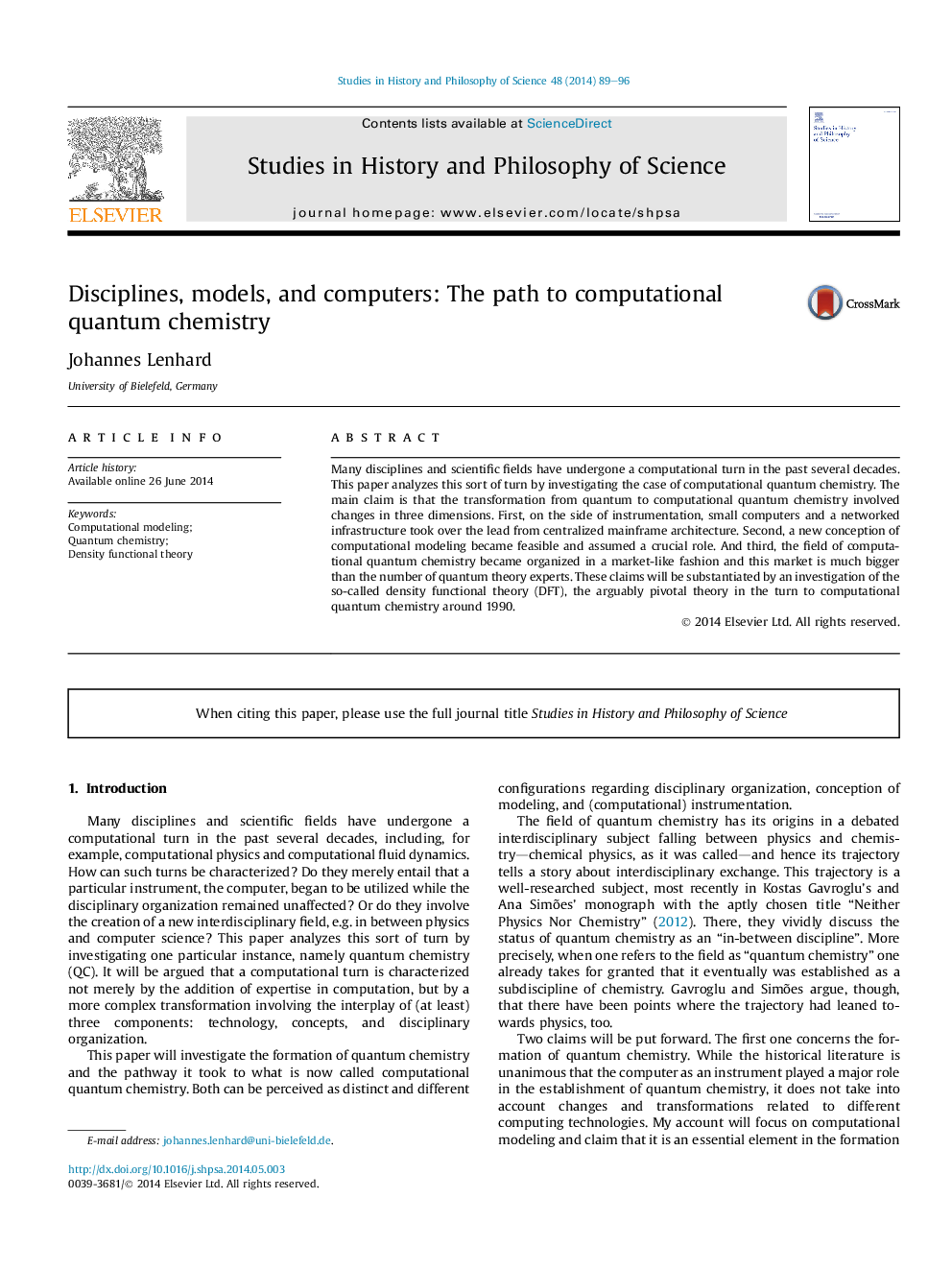| Article ID | Journal | Published Year | Pages | File Type |
|---|---|---|---|---|
| 1160860 | Studies in History and Philosophy of Science Part A | 2014 | 8 Pages |
•This paper analyzes a turn in the conception of computational modeling.•Computational quantum chemistry differs from quantum chemistry in three dimensions.•The pivotal case for investigation is density functional theory.
Many disciplines and scientific fields have undergone a computational turn in the past several decades. This paper analyzes this sort of turn by investigating the case of computational quantum chemistry. The main claim is that the transformation from quantum to computational quantum chemistry involved changes in three dimensions. First, on the side of instrumentation, small computers and a networked infrastructure took over the lead from centralized mainframe architecture. Second, a new conception of computational modeling became feasible and assumed a crucial role. And third, the field of computational quantum chemistry became organized in a market-like fashion and this market is much bigger than the number of quantum theory experts. These claims will be substantiated by an investigation of the so-called density functional theory (DFT), the arguably pivotal theory in the turn to computational quantum chemistry around 1990.
